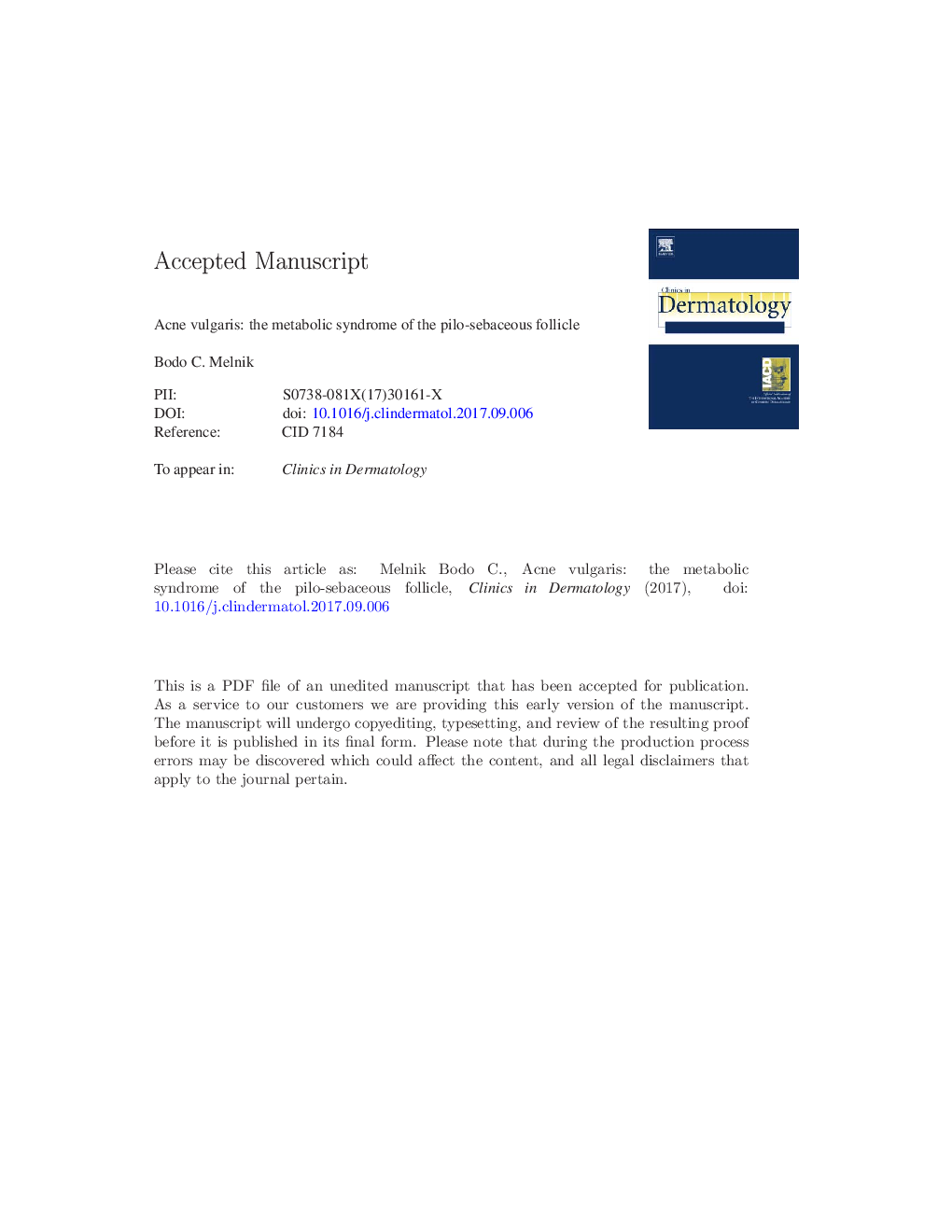| Article ID | Journal | Published Year | Pages | File Type |
|---|---|---|---|---|
| 8712355 | Clinics in Dermatology | 2018 | 46 Pages |
Abstract
Acne vulgaris is an epidemic inflammatory disease of the human sebaceous follicle and represents the most common skin disease affecting about 85% of adolescents in Westernized populations. Acne vulgaris is primarily a disease of wealthy countries and exhibits higher prevalence rates in developed compared with developing countries. No acne has been found in non-Westernized populations still living under Paleolithic dietary conditions constraining hyperglycemic carbohydrates, milk, and dairy products. The high prevalence rates of adolescent acne cannot be explained by the predominance of genetic factors but by the influence of a Western diet that overstimulates the key conductor of metabolism, the nutrient- and growth factor-sensitive kinase mTORC1. Increased mTORC1 activity has been detected in lesional skin and sebaceous glands of acne patients compared with acne-free controls. Increased mTORC1 signaling is a characteristic feature of insulin resistance, obesity, type 2 diabetes mellitus, cancer, and neurodegenerative diseases. Acne vulgaris is a family member of mTORC1-driven diseases of civilization and represents the MetS of the sebaceous follicle.
Related Topics
Health Sciences
Medicine and Dentistry
Dermatology
Authors
Bodo C. MD,
